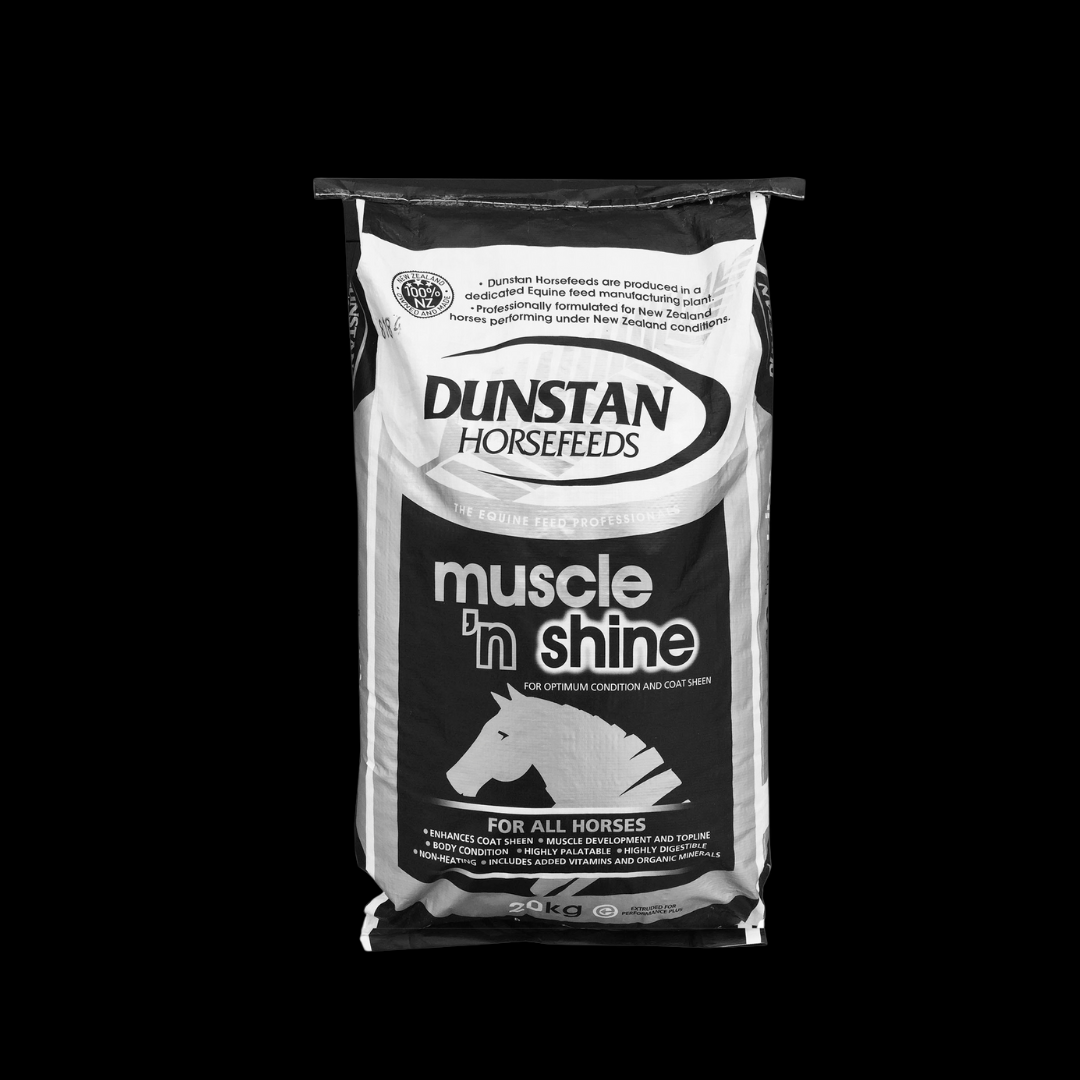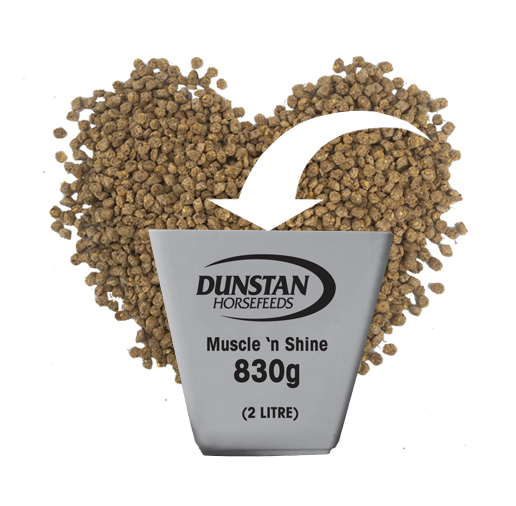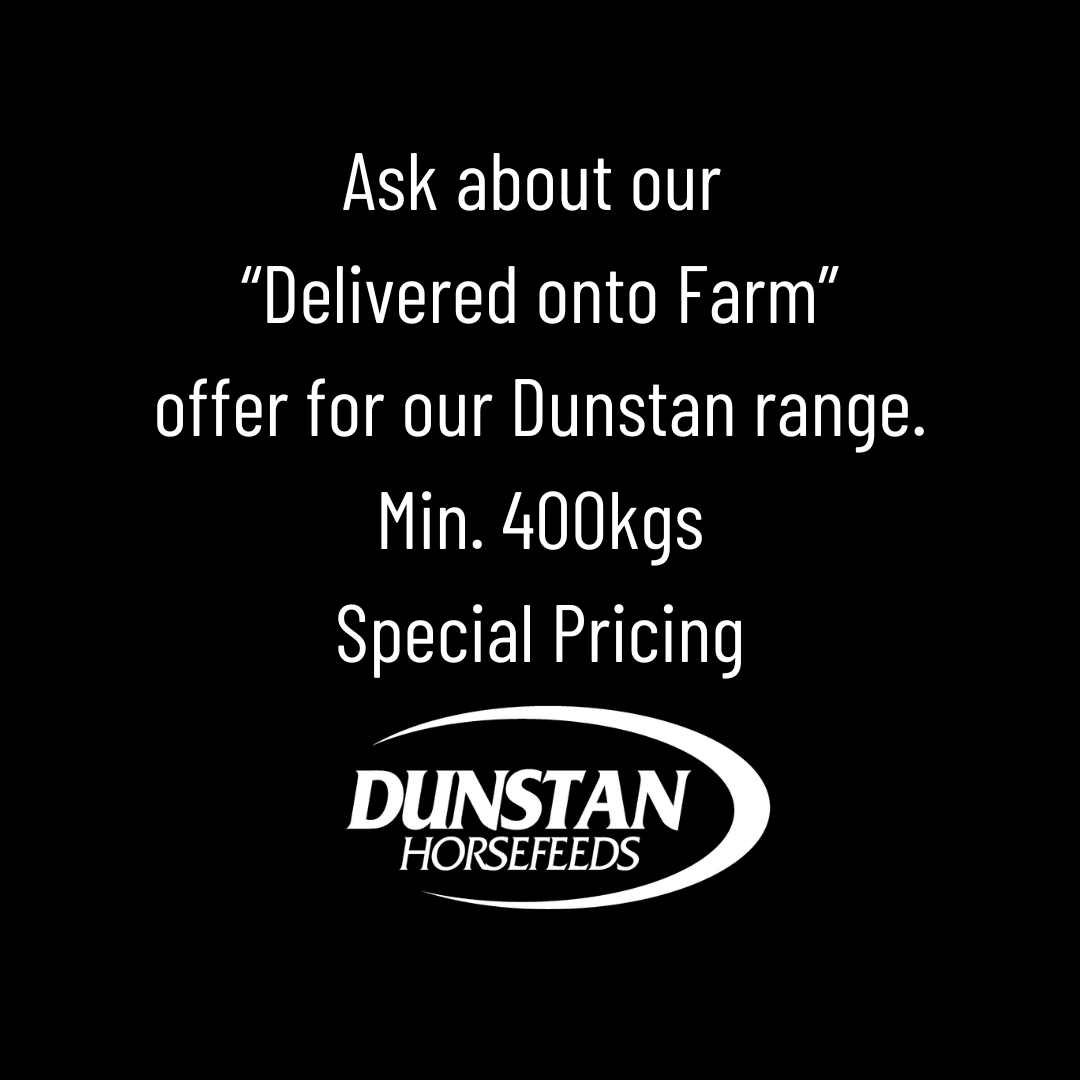Dunstan Muscle 'n Shine
- Regular price
-
$79.75 - Regular price
-
- Sale price
-
$79.75
Estimated Shipping Widget will be displayed here!
Couldn't load pickup availability
A fully extruded nugget for optimum condition and coat sheen
- Enhances coat sheen
- Enhances muscle development and topline
- Enhances body condition
- Highly palatable
- Highly digestible
- a low intake supplement
- Non-heating
- Includes added vitamins and organic minerals
INGREDIENTS
Linseed, Full Fat Soya Bean Meal, Maize, Vitamins and Organic Minerals, Vegetable (Soya) Oil.
FEEDING RECOMMENDATIONS
For coat sheen:
-
As an integral part of Yearling Show preparation Feed 250grams – 500grams daily
For body condition and topline:
-
Feed 500grams – 1 kilogram daily
The recommended feeding rates are based on a 500kg horse and are guidelines only
Typical Analysis (dry matter basis)
| Crude Protein | 20.0 % minimum |
| Fat | 11.0 % maximum |
| Fibre | 4.0 % maximum |
| Salt | 0.2 % maximum |
| Energy DE | 16.5 MJ/Kg |
Nutrient Composition - per kilo of Dunstan Muscle ‘n Shine (as fed)
| Crude Protein | 180g minimum |
| Calcium | 6.5g |
| Phosphorus | 3.8g |
| Sodium | 1.5g |
| Chloride | 3.5g |
| Potassium | 7.0g |
| Magnesium | 2.0g |
| Iron | 100mg |
| Zinc (Organic) | 120mg |
| Manganese | 85mg |
| Copper (Organic) | 45mg |
| Cobalt | .04mg |
| Iodine | 1.0mg |
| Selenium (Organic) | 0.5mg |
| Vitamin A | 10,000i.u |
| Vitamin D | 1,000i.u |
| Vitamin E | 125mg |
| Vitamin K | 2.0mg |
| Thiamine B1 | 6.0mg |
| Riboflavin B2 | 6.0mg |
| Pyridoxine B6 | 5.0mg |
| Vitamin B12 | 50ug |
| Niacin | 20mg |
| Pantothenate | 10mg |
| Biotin | 100ug |
| Folic Acid | 1.5mg |
| Choline | 150mg |
Heat stable Vitamins added at the time of manufacture
FEEDING NOTES
- Add Dunstan Muscle’n Shine to your existing ration to provide a calorie-dense supplement for weight gain and to assist with muscle and topline development.
- Ensure adequate fibre intakes by providing 1 % - 1 .5% per day of the horse's body weight as chaff, hay, Dunstan Betabeet/Sugarbeet or pasture (on a Dry Matter basis).
- It is advisable to split the daily hard-feed into at least two feeds, preferably 3-4, but feed no more than 2.0 kg of concentrate per meal.
- Always introduce a new feed gradually over a period of 7 – 10 days, working up to the desired feed intake taking into consideration body condition and work level.
General Notes
Always ensure the Horse has access to clean drinking water.
High Copper levels in Dunstan Muscle n’ Shine makes it unsuitable for feeding to sheep.
Dunstan Horsefeeds are best used within four months from the time of purchase.
This ensures the vitamins included in Dunstan Horsefeeds remains efficacious to ensure optimum equine health.
However, as is the case with human foods, “fresh is best”. So always aim to feed Dunstan products as fresh as you are able.
A Hint on Storage of Dunstan Horsefeeds:
When storing Dunstan Horsefeeds, it is important that it is kept in a clean, dry, cool and rodent-proof area to avoid potential moulds and/or contaminants.
Shipping Info
Shipping & Pickup Information
Flat Rate Shipping via Post Haste (Excludes Feed):
- North Island: $10 (1-2 working days)
- South Island: $20 (2-3 working days)
- Rural Surcharge: +$6 (extra time may apply)
Feed Shipping per bag via Post Haste:
- Central North Island: $14 Per Bag
- Upper North Island: $18 Per Bag
- Lower North Island: $28 Per Bag
- South Island: $55 Per Bag
- Rural Surcharge: +$6 (extra time may apply)
Orders placed before 1 PM are usually shipped the same day.
Click & Collect:
- Free 24/7 pickup via our after-hours collection box.
- Instructions will be emailed when your order is ready.
Returns & Exchanges
No problem! We offer 30-day returns and exchanges on all items in new, resalable condition with the original packaging. See our full policy.
FAQ
All your questions, answered.



The thermoneutral zone is the temperature range where the body can maintain its core temperature with little to no extra energy expenditure. For humans, this range is quite narrow at 21–28 °C, but for horses it’s much broader at 5–25 °C.
This difference means we should avoid rugging horses based on how cold we feel. Over-rugging can lead to serious health issues, including metabolic problems and thermoregulatory dysfunction.
Tips for Choosing a Winter Rug Weight
-
Clipped horses may need a heavier gram fill to stay comfortable.
-
Remember: horses warm themselves more easily than they cool down under a rug. If unsure, choose a lighter rug.
-
Check your horse regularly to make sure they are neither too hot nor too cold.
-
Consider your horse’s age and natural ability to stay warm.
-
As a general guide, rugging is usually appropriate when temperatures drop below 5–10 °C, but always adjust for your horse’s individual needs.
-
Always ensure rugs are waterproof. A wet rug is worse than no rug at all.
This is an indicative guide only. Always take into account factors such as wind chill, your horse’s age, weight, and condition.






